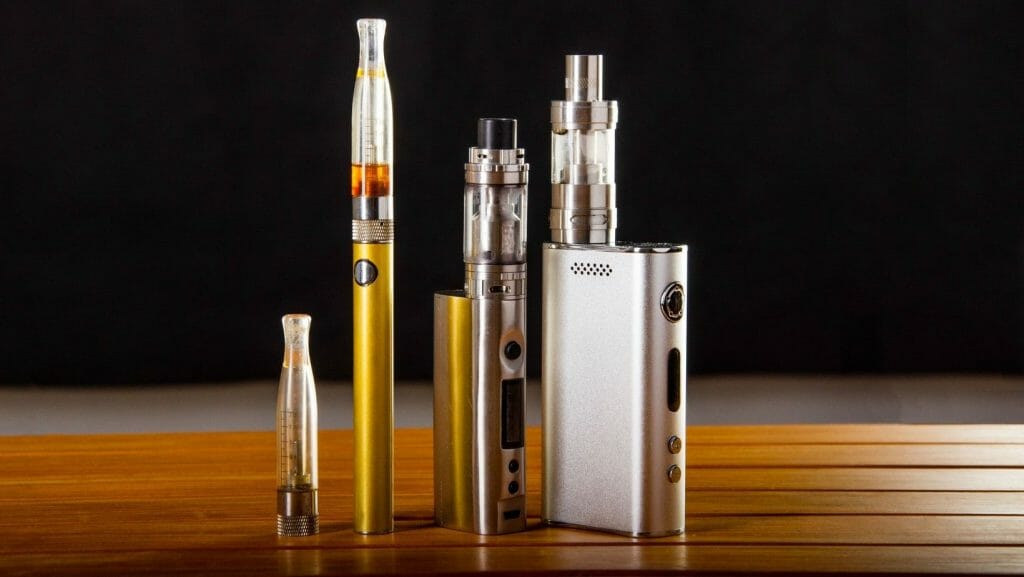Introduction
Vaping has become a huge trend over recent years, especially amongst the likes of youths and young adults. Much like cigarettes, e-cigarettes refer to a wider spectrum of products on the market, each providing users with a different experience. Not sure where to start? This guide will help you with all the basics of vaping! After you’re done with this article, don’t forget to check out this link for the best elf bar flavours and start vaping!
What’s An E-Cigarette?
Vaping refers to the act of using a device known as an e-cigarette. As the name suggests, an e-cigarette works to emulate actual cigarettes, designed to aid smokers to curb their habits. This device functions by heating a liquid that usually contains nicotine, flavourings, and other additives. The liquid vaporises and is then inhaled, mimicking the act of smoking.

Choosing The Finest Vape: Know Your Needs First!
The fast-rising popularity of vaping is reflected in the growing demand for newer and better vaping devices. Those new to vaping may have some trouble settling on a device to get, given the wide array of choices available, each with its pros and cons. A foolproof way to come about a decision would be to first understand your smoking needs.
Different habits warrant different needs, and hence, choosing a device to cater to those needs is crucial to creating a great user experience. Are you a heavy smoker? If you are, then perhaps a device with longer battery life would be preferred.
Look out for the type of airflow that these devices are built for as well. The airflow draw rate varies between devices — some are designed to provide a tighter airflow draw, akin to the feeling of smoking.
What makes e-cigarettes similar to cigarettes would ultimately boil down to the presence of nicotine in the vapour inhaled. The act of vaping itself mimics smoking, but the nicotine is what satisfies the cravings of smokers looking to transition and keeps new users hooked on the experience. There is a variety of vaping liquids in the market, boasting different flavours and, more importantly, varying levels of nicotine. Choosing the right one is essential for building a good first experience.
The Components Of A Vaping Device
Most devices can be broken down into several key components, notably, the battery pod and atomiser. Let’s explore some of these components to gain a better understanding of how e-cigarettes work!
The Battery/Mod — What Powers Your Vape!
All things require a source of power or energy to function. E-cigarettes rely on batteries as their source of power, allowing the vaping liquid to be heated up into vapour. Most devices utilise what is known as an internal battery, which can be recharged via USB-C or Micro-USB. These devices typically have little additional function besides the on-off function, meant for casual and newer users.

For those looking for a more personalised experience, e-cigarettes utilising mods are your go-to device. Mods are simply a term for more advanced battery units, which rely on external batteries and can be removed and replaced for fresh ones. These mods provide numerous fine-tuning options, such as power settings and temperature control. With an external battery and more internal circuitry, a tradeoff would be that of its size. Mods tend to be larger and may not be the right choice for those looking for a cleaner look.
The Atomiser/Tank/Pod
The atomiser is essentially a reserve of vaping liquid and is where vaporising occurs, turning the liquid into an inhalable vapour. Consisting of two main components, the tank/pod and the coil, the atomiser is where most of the processes occur.
There are two types of connection design of the atomiser. The first of which is an industry-standard 510 connection design utilised for connecting a tank. This allows various sorts of tanks to be attached to devices compatible with the 510 connection design. Pods, on the other hand, utilise what is known as a proprietary connection, allowing for use specifically with the device it was designed for. The differences between the two don’t just end there. Tanks are usually larger and made out of glass or stainless steel, making them more durable but also bulkier. Pods, on the other hand, allow for smaller designs and are typically made from food-grade plastics.
The Coil — Where The Magic Happens
The coil is what turns the vaping liquid into vapour, the core of these devices. The liquid would soak a wicking material, which would then be heated by a heating element — the coil. These coils are commonly made out of Kanthal wire or mesh and have a limited lifespan. Depending on the type of liquid chosen and how frequently you use your device, you will need to change your coils once there is a noticeable burnt flavour, or even a lack thereof, whenever you take a puff.
Resistance, wattage range, and airflow design — these are the three characteristics of coils that vary from design to design.
Resistance is an indicator of how easily current is allowed to flow through these coils. The wattage, on the other hand, simply refers to the power output of the coil and hence the device. Low resistance coils are designed for devices with higher power outputs and vice versa. Additionally, different devices have different airflow draw rates. The design of the coils is what governs this rate, resulting in a different feel and experience.
Airflow Design — What Is Your Vape Style
The airflow draw rate, dictated by a device’s airflow design, indicates the amount of air able to be drawn through the atomiser.
Mouth-to-lung (MTL) coils are designed for a tighter airflow, typically seen with devices with lower wattages and higher nicotine strength. Most devices utilise this design as it closely replicates the sensation of smoking an actual cigarette.
Direct-to-lung (DTL) coils, on the other hand, provide an open airflow, suited for devices with higher power outputs and lower nicotine levels. An open airflow allows for a higher amount of vapour to be drawn and exhaled, perfect for those looking to try out vaping tricks.
Restricted-direct-lung (RTL) coils are the middle ground when it comes to airflow and power. RTL coils have lesser power than DTL coils but more vapour produced than MTL coils, whilst utilising lesser vaping liquid. This allows for a more open airflow feel with lesser nicotine content.
What E-Liquid To Choose
Vaping liquid, or e-liquid, is what turns into vapour upon being heated in the atomiser. Most liquids are composed of four main components.
Nicotine
Whilst not all e-liquids may contain nicotine; it is an essential component for those looking towards e-cigarettes as an alternative to smoking. The preferred nicotine strength will vary from person to person, depending on smoking habits as well as preferences in vaping styles.

Currently, there are two available forms of nicotine in e-liquids, freebase nicotine and nicotine salt. The former is more common, releasing nicotine into the bloodstream at a slower rate, providing prolonged effects. The latter releases nicotine at a much faster rate but, more importantly, provides a smoother throat hit — the sensation in the throat when smoking a cigarette.
PG
Propylene Glycerol acts as a solvent and carrier of flavourings in the mixture. It is also responsible for creating that throat hit sensation.
VG
Vegetable Glycerin is another key component and is much more viscous than PG. It is responsible for the vapour output of the mixture when heated. The blend of PG and VG is what dictates the intensity of the flavour, throat hit, as well as vapour content.
Flavour
Flavourings are the final component of e-liquids. Depending on the brand, a plethora of flavours is available on the market, some more complex than others.
Basic Device Maintenance
Vaping devices have to be maintained to be able to provide the best vaping experience possible. When you first receive a new device, charge it completely and take note of the user manual and safety guidelines. Devices with replaceable coils have to be primed first by disassembling the atomiser and then placing 2-3 drops of your e-liquid onto the wicking holes. Once reassembled, it can then be filled to allow the wicking materials to be saturated with the liquid. Power settings should also be dialled back to the lowest settings and gradually tuned to fit your preferences.
Cleaning Your Atomiser
Regular cleaning of the atomiser is also advised. Once disassembled, run the parts through hot water, except the coils. They can then be left out to dry before being reassembled and primed again if a new coil was installed.
Cleaning Your Battery/Mod
Maintenance of the power source is essential to ensure your device works as intended. Exposure to moisture and even residue from e-liquid leakages may result in faulty devices. Cleaning it is as simple as using a dry paper towel to remove any moisture content or residue.
Conclusion
With an overview of how e-cigarettes work and the different things to look out for when choosing a device, you can now begin your own journey in finding the right device for yourself!


